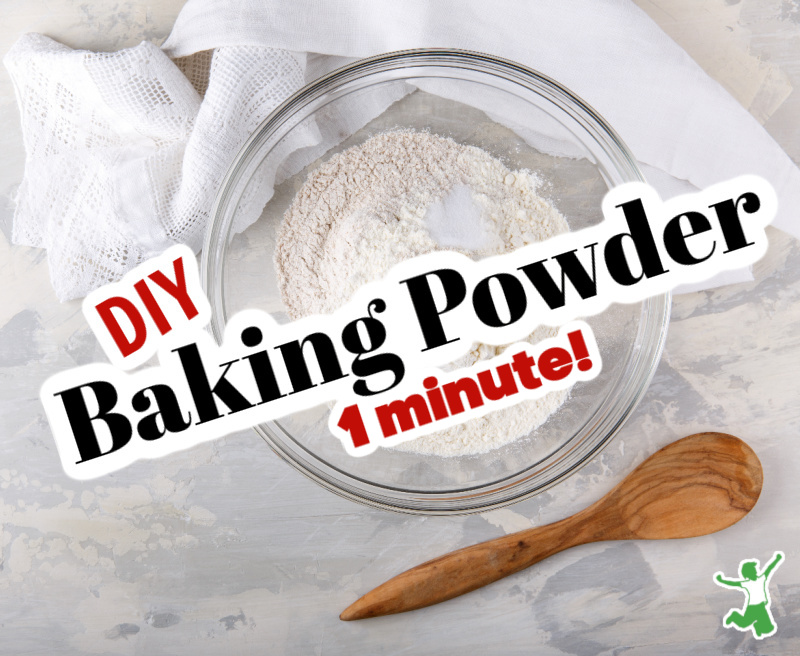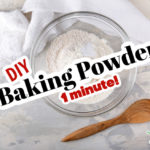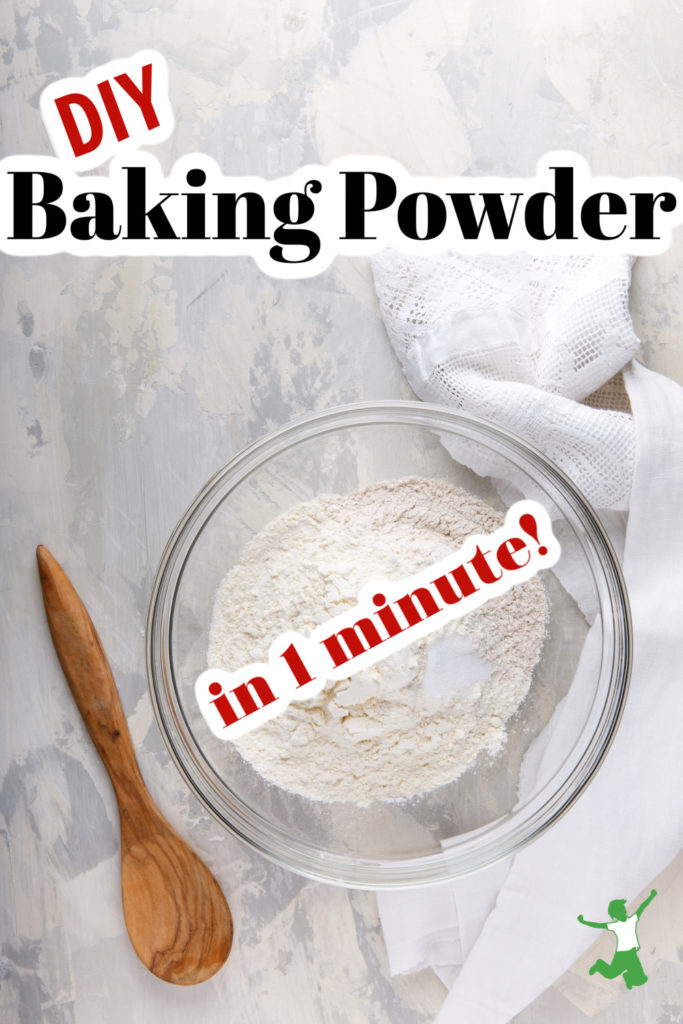Tips for finding the healthiest baking powder at the store with optional recipe for quickly mixing it up in one minute yourself for pennies per serving.

Healthy baking powder is a must in the kitchen of a savvy cook. Used as a leavening agent, baking powder lightens the texture and increases the volume of baked goods such as muffins, cakes, pancakes, and cookies.
It works by releasing carbon dioxide bubbles into the wet batter in a chemical reaction. This process expands and helps to add optimal texture to the mixture.
Fast-Acting vs Slow-Acting
Baking powder can be fast-acting, slow-acting, or both.
Slow-acting baking powders work with the heat of the oven to provide a late rise to the dough.
Fast-acting baking powders work at room temperature and become effective immediately upon addition to the wet batter on the countertop.
Double-Acting
Most commercial baking powders are double-acting.
This means that they work both on the counter and in the oven providing an extra measure of reliability and consistency to the final product.
Baking Powder Contaminants
Many people do not realize that baking powder can contain undesirable ingredients and even toxins.
Aluminum
The problem with the double-acting baking powders is that they usually contain aluminum in the form of sodium aluminum sulfate or sodium aluminum phosphate.
Slow-acting baking powders have the same problem unless the acid salt used is sodium acid pyrophosphate.
Fast-acting, low-temperature baking powders contain just monocalcium phosphate, cream of tartar, potassium bicarbonate or sodium bicarbonate (baking soda), and starch.
This is typically the choice of health-conscious cooks trying to avoid aluminum in all its forms.
Aluminum consumption has been linked with the development of Alzheimer’s Disease.
The use of aluminum-based acid salts to leaven the dough can also sometimes give a slightly metallic taste to the final product.
Choosing an “aluminum-free” baking powder does not eliminate all health risks as is commonly thought.
GMOs and Starch
Starch is typically added to these fast-acting, aluminum-free powders to keep the baking powder from clumping over time.
Corn starch is the starch of choice which unless organic, is most likely derived from genetically modified corn.
I did a survey of baking powders at my local health food stores recently and did not find one brand that used organic corn starch.
I did find one that used nonGMO potato starch. But, if one is on a low-carb diet, this baking powder is not a great choice either.
Good news! Rumford baking powder has a new formulation using GMO-free corn starch.
Many other brands are still using GMO ingredients, however, so read ingredients carefully!
It seems the best solution all around is to make your own! Baking powder takes seconds to mix and is fresh and potent each time you need it.
How to Test Commercial Baking Powder for Potency
This eliminates another problem with store-bought baking powders that lose strength over time.
To test effectiveness, stir a teaspoon into a small cup of hot (not boiling) water.
If it fizzes it is still usable. If it does not fizz, throw it away.
Make Your Own! (aluminum-free, starch-free, nonGMO)
Check out the recipe for making healthy baking powder below. It is so simple to make yourself and cheaper too!
You might be wondering why you haven’t been doing this all along!
One important tip for making DIY baking powder.
Do not make a large amount and store it in the pantry, as it will absorb moisture and get hard.
Make only as much as you need for each recipe.

Baking Powder Recipe
How to make baking powder in less than a minute.
Ingredients
- 1 tsp baking soda
- 2 tsp cream of tartar
- 2 tsp lemon juice optional. Use instead of the cream of tartar if you are on the GAPS or SCD diets.
Instructions
-
Mix the baking soda and cream of tartar in a small bowl.
-
Use immediately.
Recipe Notes
Note that if your recipe includes yogurt, kefir, buttermilk, lemon juice or vinegar, there is no need to mix up baking powder. Just use baking soda alone and the acidity already included in the recipe will activate it to provide the desired dough leavening effect with no cream of tartar.









Hello,
The recipe says “use immediately”.
Does that mean that you can’t make a large quantity and store it for future use?
Thanks.
You can do this, but it may clump up depending on the humidity in your home.
You can do this, but it may clump up depending on the humidity in your home.
What’s your take on baker’s ammonia?